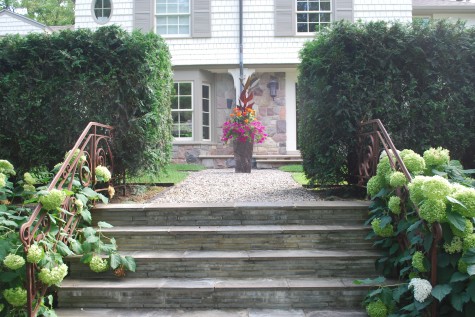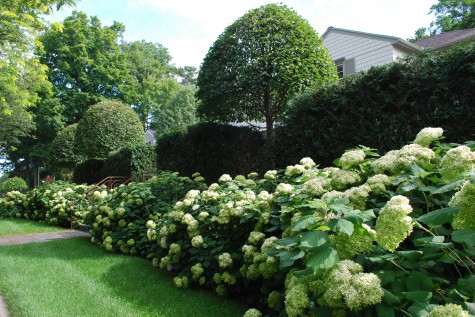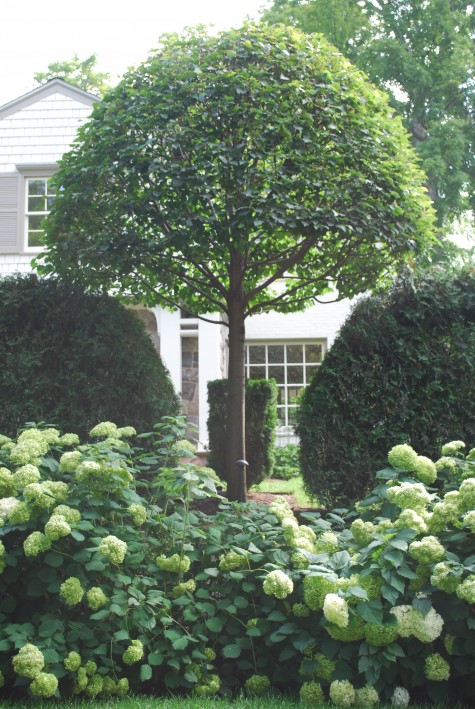Summer blooming hydrangeas appeal to almost every gardener. Each flower head is substantial. Comprised of hundreds of tiny florets, a single cut stem is a bouquet that celebrates the beauty of the summer season. One shrub in full bloom delights the eye. There are no end of cultivars-some white, some pink, some blue on occasion. They are broadly tolerant of a variety of conditions, but appreciate their fair share of sun, space, and water. I plant Limelight hydrangeas, and the new dwarf version, Little Lime, more than any other variety. They are vigorous growers, and bloom reliably.
My zone is a little too chilly and unfriendly for a good many hydrangeas. This is just me talking, but I only have one westside client who has been successful in growing blue hydrangeas. Her success is a mystery to me. The pink flowering varieties, available in my zone are easy to grow, but so reluctant to bloom. Sporadic bloom on a sizeable shrub makes me look like I don’t know how to garden. My clients on the east side of the metropolitan area have no problem cultivating pink and blue hydrangeas. I can’t help but think Lake St. Clair mitigates seasonal extremes.
I am satisfied to grow the hydrangeas that do well in my area. This means Annabelle,and Limelight. White hydrangeas, these. They are easy to grow, and so willing to bloom. Come June, the Annabelles delight every gardener with their snowballs. My favorite place to site them is on a slope, as they are stubbornly floppy in habit. Come the first of August, the Limelights transform the garden. 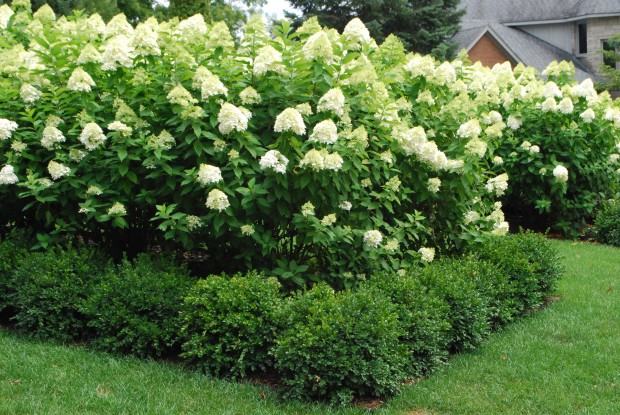
Their greenish white conical flowers develope over a period of a few weeks. Chubby, luscious, and very large, the showy flowers dominate the summer landscape. I have 25 or 30 of them in the ground at our landscape yard. They are planted in gravelly soil, and make due with whatever water comes from the sky. They are a quarter of the size of these plants; the flowers are tufts. Plant hydrangeas in compost enriched soil that gets regular water.
Large growing hydrangeas can be stalky-leggy. Skillful pruning in the early spring can help keep them green and blooming to the ground. But a good underplanting gives them a very finished look. I like to face down most large growing shrubs with a smaller growing shrub or perennial. Boxwood does a great job of concealing those inevitably gawky Limelight legs. They do a better than great job of giving the hydrangeas some winter interes
This block of limelights is wedged in between a hedge of yews, and an L of boxwood. In a different, cooler, and more rainy summer, the tops of those yews would be dark emerald green, rather than the color of toast. But the lime green second flush of growth on the boxwood is a beautiful textural contrast to the hydrangeas. No legs on display here.
I prune my hydrangeas as soon as the buds swell in the spring. I give them a shag haircut, by shortening the long branches on the top. I rarely prune the bottoms. Heading back the long top branches allows light to reach the bottom. Good foliage and flowers requires good light. It is so easy to see in this picture that the heaviest bloom is occurring where there is the most exposure to light.
Limelights can be pruned as low as 24″-30″ in early spring. Hard pruning produces fewer, but larger flower heads. I prune my hydrangeas lightly, as I like them tall, and I like lots of flowers. They make a beautiful backdrop for this pot in August. They hydrate the look of my summer landscape.
My blocks of hydrangeas are sequestered behind a pair of yew hedges-one formally pruned, another left shaggy. Thuja nigra backs them up, and sets off the white flowers to good advantage. This is the juciest moment I have had to date in my garden all season-you bet I am enjoying them.


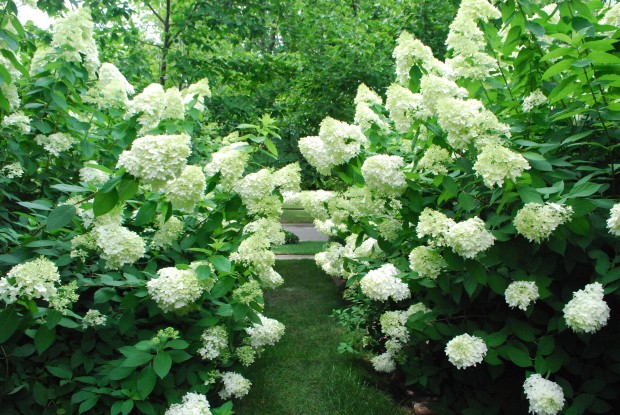

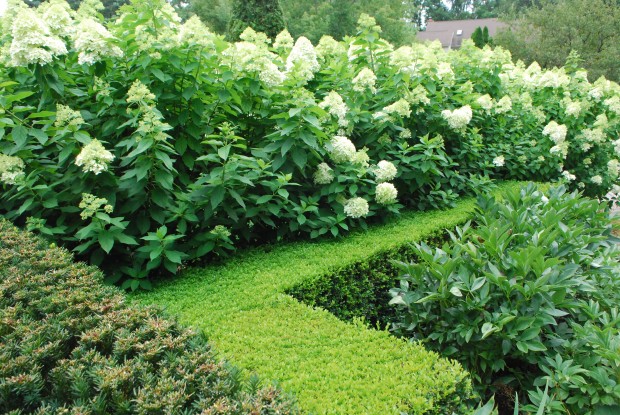

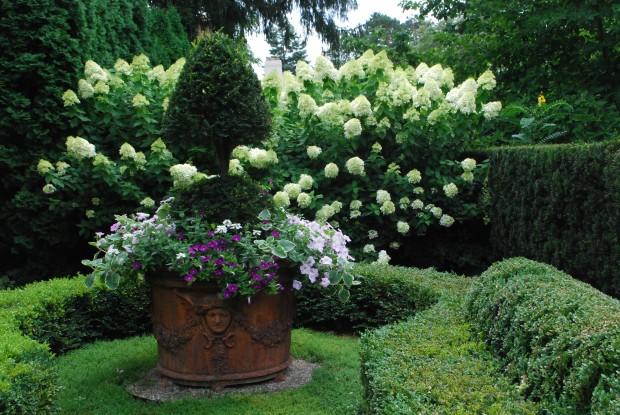
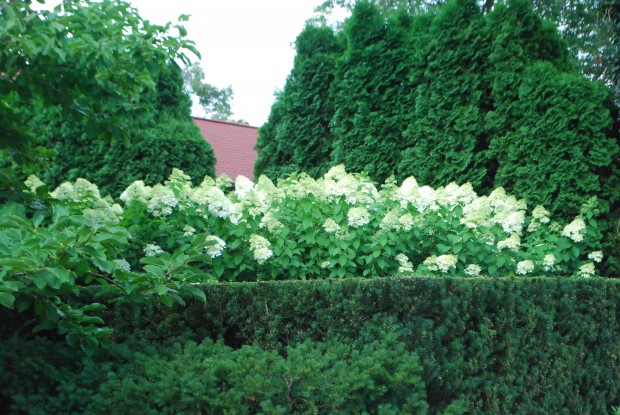
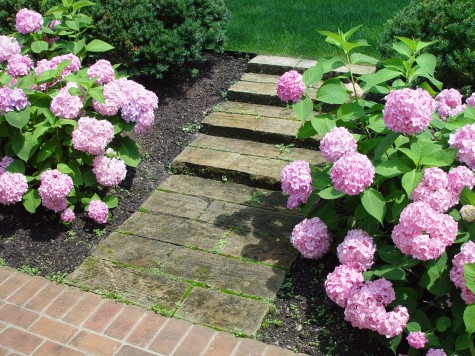
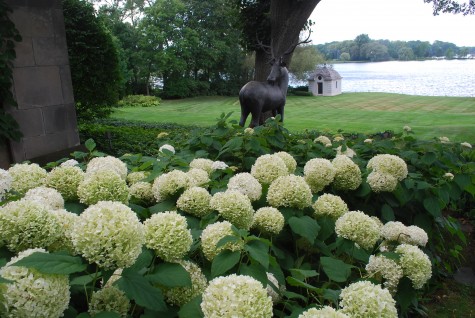
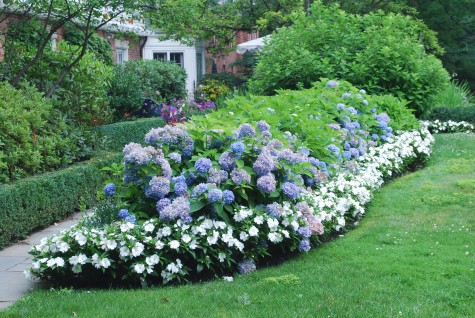


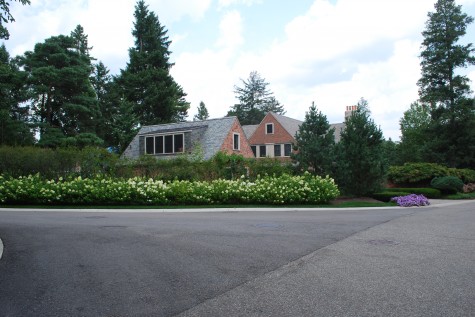
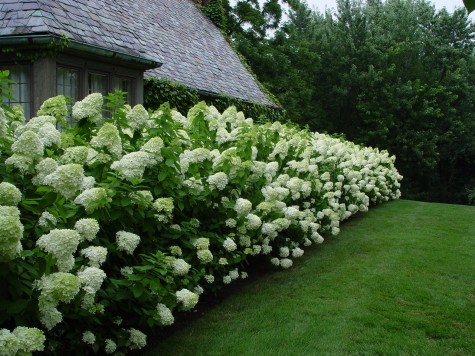
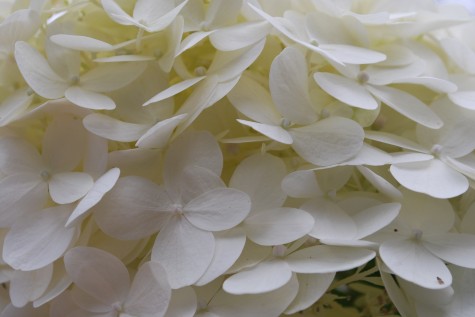
 Yesterday I discussed all the grading and stonework that was necessary for this project; what a relief it was to finally be putting plants in the ground! The neighborhood association belatedly decided this wall needed to be screened by plants. They apparently did not permit walls in front yards. So I planted a slew of Annabelle hydrangeas; my clients have a great view of the wall in the winter.
Yesterday I discussed all the grading and stonework that was necessary for this project; what a relief it was to finally be putting plants in the ground! The neighborhood association belatedly decided this wall needed to be screened by plants. They apparently did not permit walls in front yards. So I planted a slew of Annabelle hydrangeas; my clients have a great view of the wall in the winter.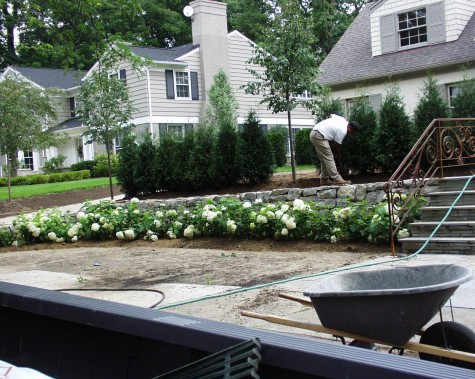 The upper level we did screen from the street. Houses that sit high afford little in the way of privacy. I interspersed five little leaf lindens in a hedgerow of techny arborvitae. The techny’s are dense, and slow growing. They also tolerate some shade, although the plan was to keep the lindens pruned.
The upper level we did screen from the street. Houses that sit high afford little in the way of privacy. I interspersed five little leaf lindens in a hedgerow of techny arborvitae. The techny’s are dense, and slow growing. They also tolerate some shade, although the plan was to keep the lindens pruned.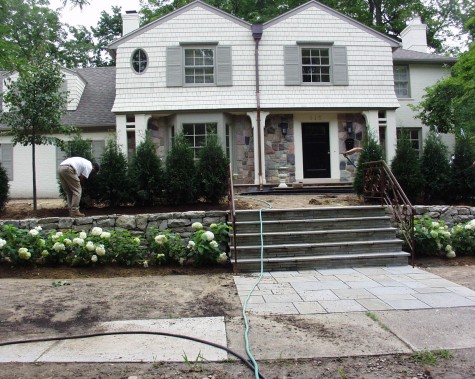 Lindens belong to that group of trees that do not mind shaping. I have seen old ones not much taller than 15 feet, with densely foliated heads. My lindens at my store are boxed; they have been pruned into rectangular shapes. They are a hedge high above ground. They greatly soften the appearance of the building-originally a machine shop built in the 1940’s. These lindens I wanted to keep in scale with the house.
Lindens belong to that group of trees that do not mind shaping. I have seen old ones not much taller than 15 feet, with densely foliated heads. My lindens at my store are boxed; they have been pruned into rectangular shapes. They are a hedge high above ground. They greatly soften the appearance of the building-originally a machine shop built in the 1940’s. These lindens I wanted to keep in scale with the house.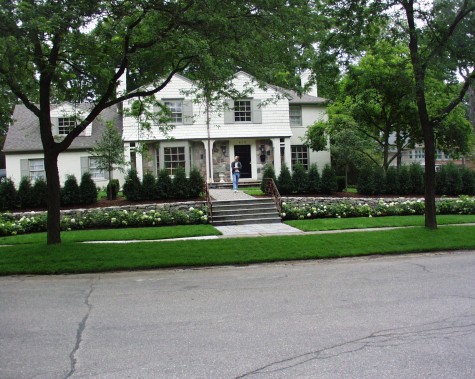 The house seems to sit lower than it once did. Though the front door of the house is off center, the landscape balances the space. The granite walled portion of the facade reads as a centerpiece, of which the front door is a part. The landscape making much of the bluestone staircase centers the view.
The house seems to sit lower than it once did. Though the front door of the house is off center, the landscape balances the space. The granite walled portion of the facade reads as a centerpiece, of which the front door is a part. The landscape making much of the bluestone staircase centers the view.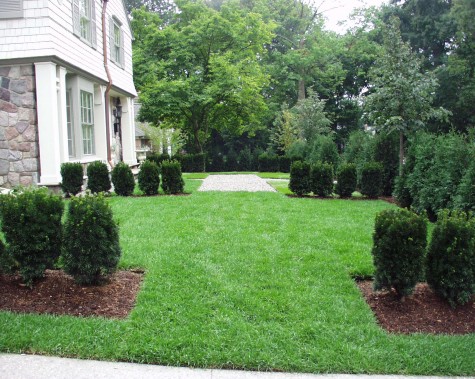 There were two issues driving the design of the upper level. How could the sidewalk gracefully turn towards the front door? The walk from the street now empties into a large rectangle of gravel; its color and size makes it read as the dominant element. The taxus viridis, naturally a very columnar yew, is planted in rows perpendicular to the house. This distracts the eye from the fact that the property in the background is dropping downhill. The techny arborvitae at the end are actually much taller than the yews-but everything reads about the same height. In time, the yews could be topped level with the horizon, thus minimizing the slope down to the west.
There were two issues driving the design of the upper level. How could the sidewalk gracefully turn towards the front door? The walk from the street now empties into a large rectangle of gravel; its color and size makes it read as the dominant element. The taxus viridis, naturally a very columnar yew, is planted in rows perpendicular to the house. This distracts the eye from the fact that the property in the background is dropping downhill. The techny arborvitae at the end are actually much taller than the yews-but everything reads about the same height. In time, the yews could be topped level with the horizon, thus minimizing the slope down to the west.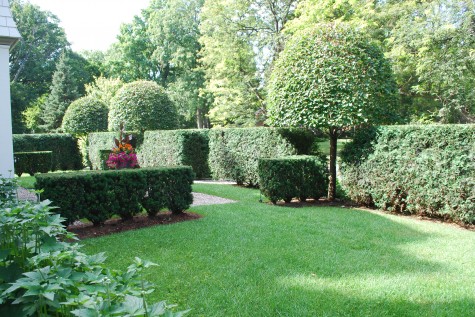 Eight years later, the landscape has begun to grow in. This front courtyard is private, and simple.
Eight years later, the landscape has begun to grow in. This front courtyard is private, and simple. 